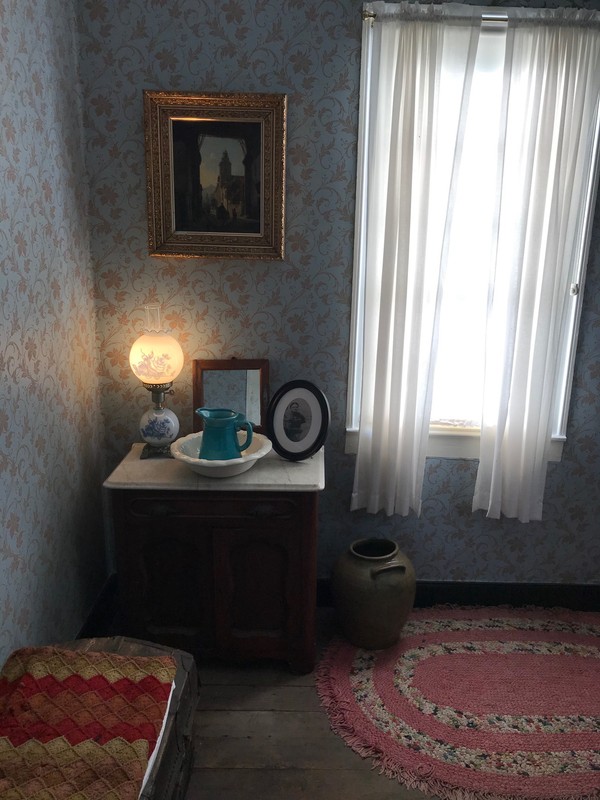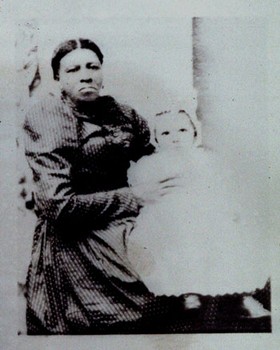Upstairs Fort Hill-James Edward Calhoun Bedroom
Introduction
Text-to-speech Audio
Images
James Edward Calhoun Bedroom

Jenny Lind style bed

Susan Clemson Richardson

Backstory and Context
Text-to-speech Audio
Susan Clemson Richardson:
Susan was born around 1828; after Thomas Green Clemson's marriage to Anna Maria Calhoun in 1838, Susan was given to Anna Clemson by her father to serve as Anna's personal enslaved domestic worker. Daphne, Susan's mother served as wet nurse to the Clemson children. It is unknown if Bill Laurence, Susan's father, was enslaved at Fort Hill, but his surname implies that he was likely enslaved by the neighboring Lawrence Family.
When the Clemsons moved to Cane Break plantation in Saluda in January 1844, Susan, Daphne, Bill Laurence, and her brother Benjamin were given to the Clemsons by John C. Calhoun. Susan, like her parents and brother, were sold to Alfred Long Dearing in December 1850. At some point, Susan began working for the Edwards family and it is unknown if this occurred prior to emancipation.
Around 1850, Susan married Bill Richardson who was enslaved on a neighboring Edgefield District plantation. They had six to seven children, at least two of whom were sons. One son was named Tucker, who died in April 1910, and the other son was a contractor in Aiken who built a home for his mother in Aiken in 1904. Susan lived at this home on her son's property until her death sometime after April 1910. She was buried in Aiken.
A picture of Susan Clemson Richardson was donated to Clemson University by Myrtle Herlong in 1950's. Myrtle maternal grandparents were the Edwards family in Saluda who employed Susan for some time. She reported that Susan is listed in the records of the Red Bank Baptist Church which appears to be the church of the Edwards family.
Cite This Entry
Caroline M. Ross on behalf of Fort Hill. "Upstairs Fort Hill-James Edward Calhoun Bedroom." Clio: Your Guide to History. July 30, 2020. Accessed March 14, 2025. https://theclio.com/entry/104480
Sources
“The African American Experience at Fort Hill | Clemson University, South Carolina,” accessed May 21, 2020, https://www.clemson.edu/about/history/properties/fort-hill/african-americans1/.
“Educational Resources | Clemson University, South Carolina,” accessed May 21, 2020, https://www.clemson.edu/about/history/properties/ed.html.
“Historic Properties | Clemson University, South Carolina,” accessed May 21, 2020, https://www.clemson.edu/about/history/properties/.
“Susan Clemson Richardson | Clemson University, South Carolina,” accessed June 26, 2020, https://www.clemson.edu/about/history/properties/fort-hill/african-americans1/susan-clemson-richardson.html.
images courtesy of Fort Hill
images courtesy of Fort HIll
https://www.clemson.edu/about/history/properties/fort-hill/african-americans1/susan-clemson-richardson.html

